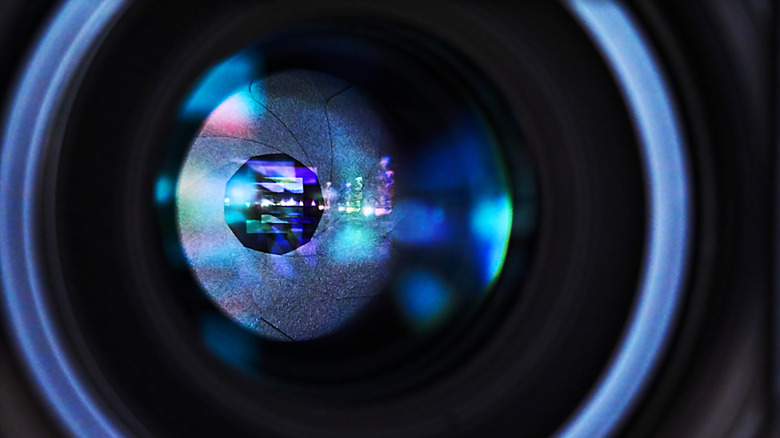Why You Can See Stars From Earth, But Not In Some Space Photos
Despite all the scientific progress we've made and the incredible explorations of our solar system we've carried out, space itself remains one giant mystery. From the potential for life to exist on other planets, to the idea that something could have pre-existed the Big Bang, there are plenty of mysteries about space that scientists can't even explain.
With all that in mind, and the potential to uncover revelatory information about the cosmos and our place in it, we might tend to overlook the smaller questions about space. Like, why is it that we can see stars from the surface of our planet but can't in some photos taken in space? That is, photos taken in space itself, and not those taken by powerful telescopes on the Earth's surface.
Though it might seem like a fairly small mystery, it's actually quite fascinating in and of itself. If we can design robots that can successfully traverse the surface of Mars and take snapshots of entire sectors of the universe, revealing the hordes of galaxies that exist in the cosmic ether, surely we can design cameras that are good enough to capture stars? Well, as you might not be surprised to hear, the light conditions in space aren't exactly similar to those on Earth, which means cameras have to operate in a different way when off-planet.
The mechanics of photography
The reason why many photos captured in space don't show stars has more to do with the way photography works than it does the stars themselves. Cameras operate in part by adjusting their aperture and shutter speed to get an accurate exposure. The aperture ring of a camera sits inside the lens and can be widened or narrowed to adjust the amount of light that makes its way through the lens to the sensor. A wider aperture is desirable in low-light environments as it allows more light through, and when there's a lack of light in the environment, the more the sensor can get, the better. Likewise, in brighter environments, closing the aperture will prevent an image from becoming washed out.
The human eye works in a similar way to a camera in that respect. Our iris is essentially our eye's aperture, adjusting itself to suit the conditions of the environment. In scenarios with abundant light, our irises contract and our pupils become smaller, which means less light can enter our eyes. In darker situations, our pupils enlarge to take in more light and allow us to see. If you were to walk outside at night from a brightly-lit room, it would likely take some time before you could see stars in the night sky (assuming it was a clear night). That's because it takes a little time for our eyes to adjust to the different lighting conditions and adapt our pupils to let more light in.
The shutter speed of a camera refers to how long the sensor is exposed to the light passing through the lens. A high shutter speed would only briefly reveal the sensor to the light, while a low shutter speed would allow for a much longer exposure. With that in mind, we can start to understand how space photography often features a surprising lack of stars.
Stars appear in some but not most space images
In space, the light reflected by the Earth and moon is incredibly bright. In order to take photos in their vicinity, cameras need to use a high shutter speed and high (or smaller) aperture to ensure only minimal light makes its way to the sensor and the photos are properly exposed for the conditions in space. Of course, stars are much fainter than our planet and the moon due to the fact they're much, much further away. As such, a very short shutter speed and a high aperture are not going to let in enough light for the dim stars to be exposed. It's the same principle as when we take photos of things at night and sometimes the stars don't show up in the image. In those instances, the shutter speed and aperture are adjusted for the conditions on the ground, which typically won't let in enough light for the stars to be exposed.
What's more, some cameras used in space photography don't have an adjustable aperture. Scientists design certain cameras, such as those on the OSIRIS-REx spacecraft, with fixed apertures based on their predictions of the light levels being captured. The OSIRIS-REx MapCam, for example, has a wide enough aperture to properly expose the surface of a dark asteroid, but it would be useless if pointed at anything on Earth since the image would be completely washed out. As such, many cameras used in space simply aren't designed to capture the light from distant stars. That said, there are plenty of images from space that actually do feature stars, it's just that most shots captured off-planet are of specific objects such as our own planet, and the cameras are set up to capture those objects rather than stars.


